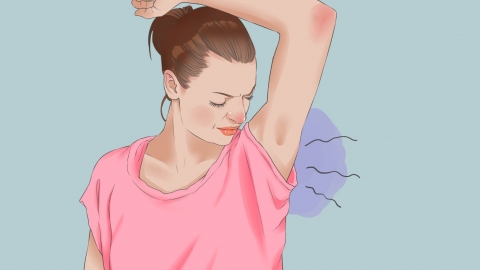How much does surgery for axillary odor (bromhidrosis) cost approximately?
Generally, the reference price for surgical treatment of axillary osmidrosis (body odor) ranges from 3,500 to 13,500 yuan per session. Noticeable improvement can be seen 2-3 weeks after surgery, and full recovery usually takes 1-2 months. However, the exact cost may vary depending on factors such as surgical method, type of anesthesia, preoperative examination items, postoperative care plan, and regional price differences. This procedure should be performed at a qualified hospital. Detailed explanations are as follows:
1. Type of Surgery
Different surgical methods involve varying levels of complexity and cost, hence differing reference prices. Traditional excision of apocrine glands follows a standard procedure and does not require specialized precision equipment, with a reference price ranging from 3,500 to 7,500 yuan per session. In contrast, minimally invasive procedures for axillary osmidrosis require specialized instruments and precise techniques, resulting in higher equipment and operational costs. The reference price for this method may range from 7,500 to 13,500 yuan per session.
2. Type of Anesthesia
The choice of anesthesia affects the overall cost. Local anesthesia is relatively simple, requires less medication, and has lower costs, with a reference price ranging from 3,500 to 6,500 yuan per session. If intravenous anesthesia is used, it requires monitoring by a professional anesthesiology team and involves more complex medications, offering higher safety and comfort. The reference price may increase to between 6,500 and 11,500 yuan per session.

3. Preoperative Examination Items
The number and type of preoperative tests can affect the overall cost. If only basic tests such as routine blood tests, coagulation function tests, and infectious disease screenings are performed, the reference price may range from 3,500 to 6,000 yuan per session. For patients with underlying conditions such as hypertension or diabetes, additional tests including liver and kidney function assessments, electrocardiogram (ECG), and blood glucose monitoring may be required, increasing the examination costs. In such cases, the reference price may rise to between 6,000 and 10,500 yuan per session.
4. Postoperative Care Plan
Different postoperative care regimens result in varying costs. Basic care, such as wound dressing changes and oral anti-inflammatory medications, has a reference price ranging from 3,500 to 7,000 yuan per session. If additional services such as wound phototherapy, pain-relief medications, or scar-reduction treatments are included, the care cost increases accordingly, and the reference price may rise to between 7,000 and 13,500 yuan per session.
5. Regional Price Differences
Regional economic development levels influence surgical costs. In first-tier cities, where labor costs, rental fees, and medical consumable prices are higher, the reference price is generally higher, ranging from 7,000 to 13,500 yuan per session. In contrast, in third- and fourth-tier cities and rural areas where overall living costs are lower, the total expenses are reduced, and the reference price may range from 3,500 to 7,000 yuan per session.
In daily life after surgery, it is important to keep the armpits dry, avoid getting the wound wet, and refrain from excessive arm lifting or strenuous exercise to prevent wound dehiscence. A light diet is recommended, avoiding spicy and irritating foods, as well as seafood such as chili peppers, shrimp, and crabs. Additionally, follow the physician's instructions for regular dressing changes and follow-up visits to monitor wound healing and prevent infection.










